 "/>
"/>
 "/>
"/>

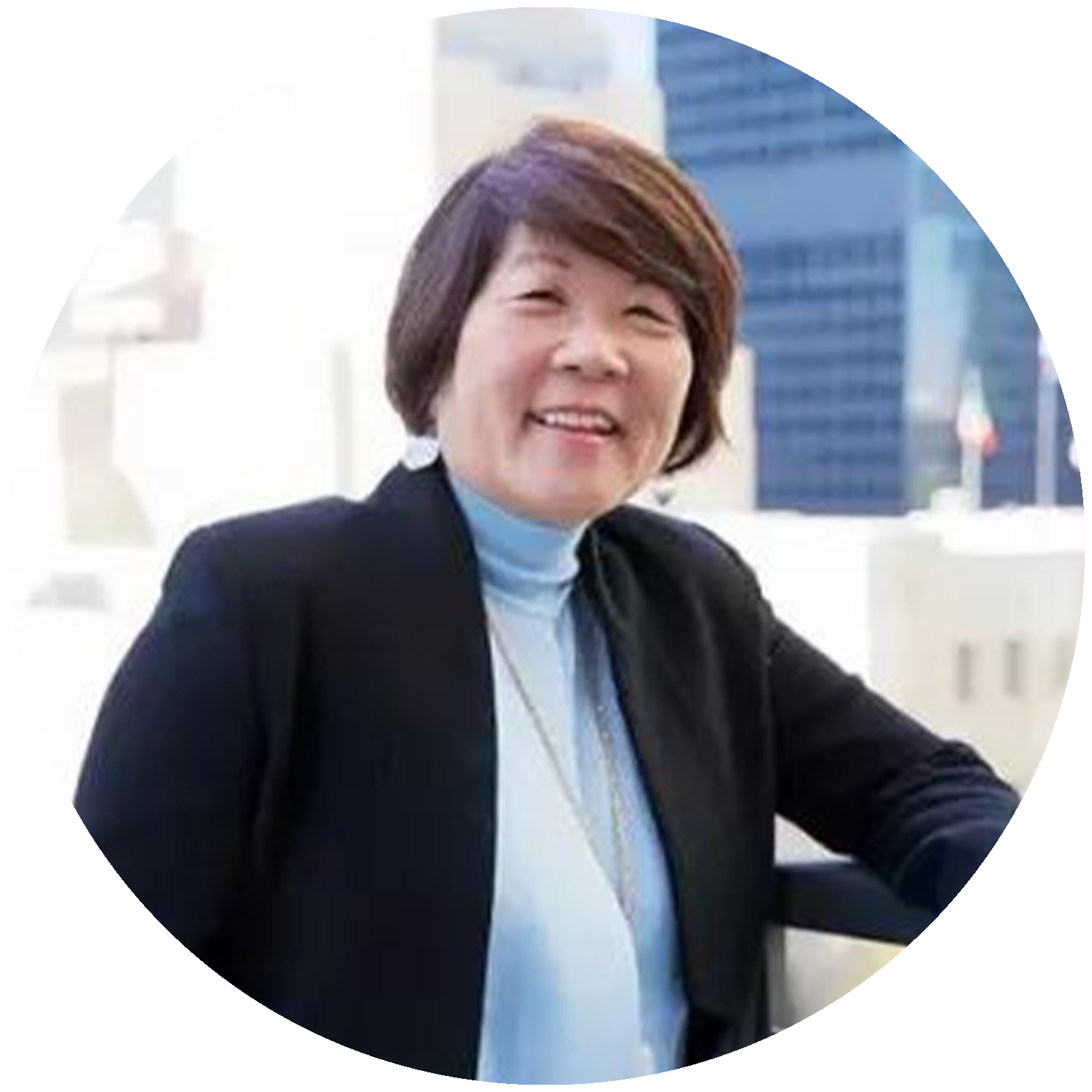
Jeri Oka
JERDE资深副总裁、 资深设计主创
Senior Vice President & Senior Design Principal
加州州立理工大学景观建筑专业理学学士
B.Sc (Landscape Architecture)
California Polytechnic University
或许你未曾听说过JERDE捷得,但你一定听过或亲临感受过日本的难波公园、美国的环球影城、亦或是澳门的新濠天地、北京的蓝色港湾……JERDE的项目遍布全球各地,至少10亿人的生活中,出现过他们项目的身影。
11月4日至11月30日,JERDE在清华大学设计中心举办了名为“体验不同”的专题展览。当月20日JERDE资深副总裁兼资深设计主创Jeri Oka女士,为活动带来“体验式的未来”专题演讲。
建道很荣幸作为特邀媒体,聆听了本次专题演讲,并对Jeri Oka女士、及JERDE中国区董事总经理、资深副总裁刘昶昇先生(Mark Liu)进行了深度访谈。
让我们一起走入JERDE捷得,深入了解这一国际知名的城市规划与建筑设计事务所。
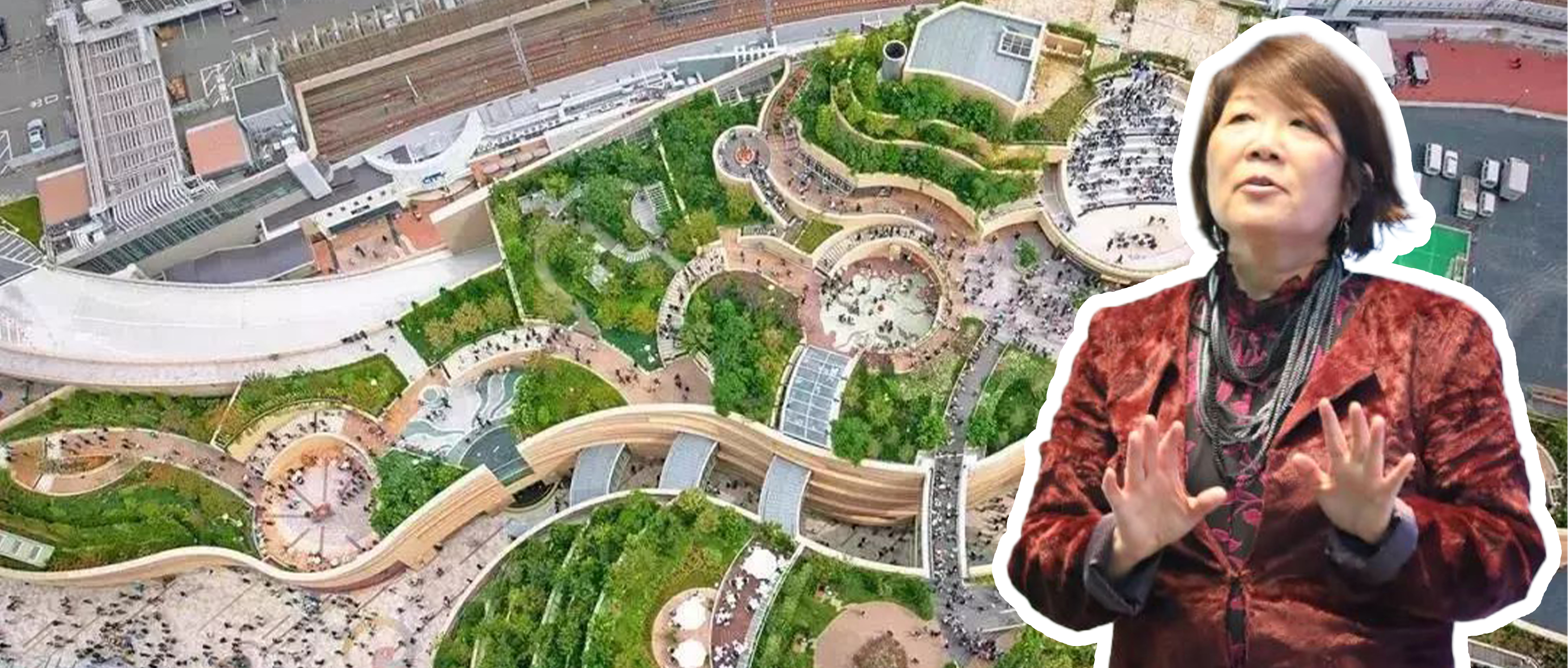
本期人物

Jeri Oka
JERDE资深副总裁、 资深设计主创
Senior Vice President & Senior Design Principal
加州州立理工大学景观建筑专业理学学士
B.Sc (Landscape Architecture)
California Polytechnic University
Jeri作为公司主要设计负责人,在城市综合体环境及空间设计方面,拥有丰富的经验积累及创意想法。Jeri曾在EDAW(易道景观设计公司)任设计总监,有近30年的景观设计从业经验。对于业态规划及场所创造有独到见解,在基地规划和景观设计方面拥有深厚经验。善于将审美与实践相结合并提出创新性设计方案。
主要负责:设计前期规划、业态建议及定位板块。代表作品:日本难波公园、澳门新濠天地、三亚海棠湾君悦酒店等。

刘昶昇|Mark Liu
JERDE资深副总裁、中国区董事总经理
Sr. Vice President & Managing Director, China
伊利诺理工大学建筑学士
B.Arch Illinois Institute of Technology
关于 JERDE
作为国际知名的城市设计与建筑公司,JERDE总部位于美国加州——洛杉矶。公司汇聚了来自各国的优秀艺术家、建筑师、摄影师及创新性人才,项目管理办公室遍布世界各地,中国就有两处,分别位于香港和上海。
JERDE注重挖掘各地独特文脉,以创造更好体验为己任,项目类型涵盖了住宅、酒店、商业综合体、办公、娱乐等众多方面,经典代表作如难波公园、弗雷蒙特大街、百乐宫、太平洋城等。
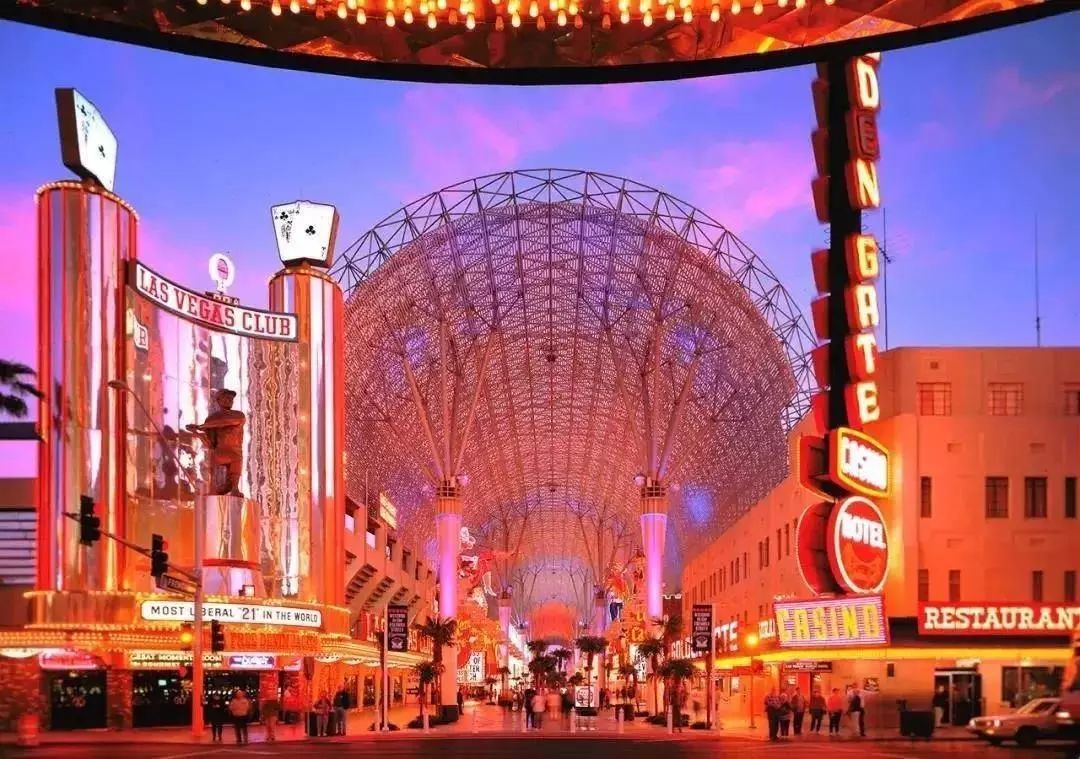
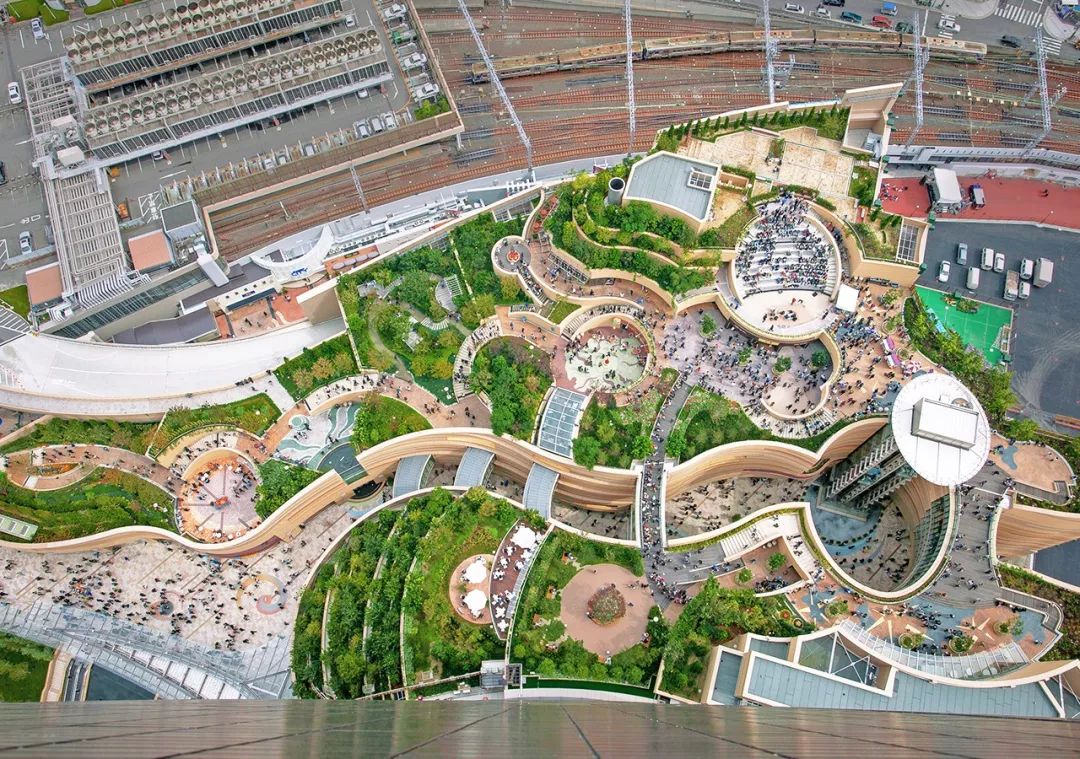
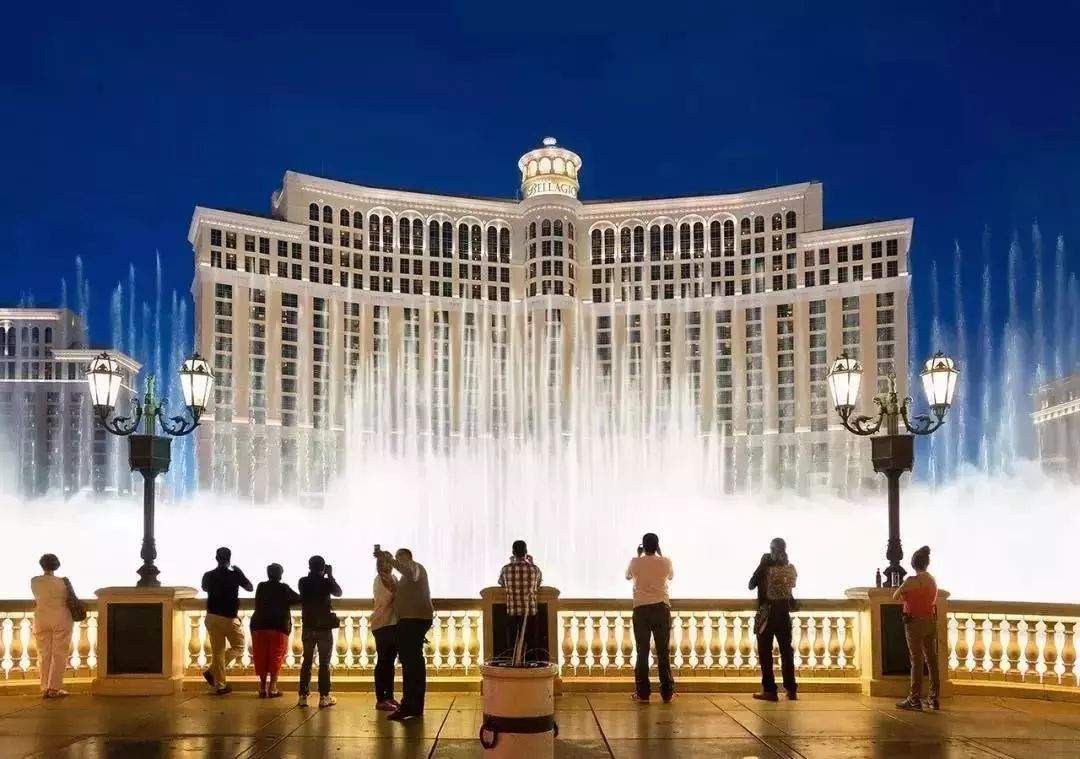
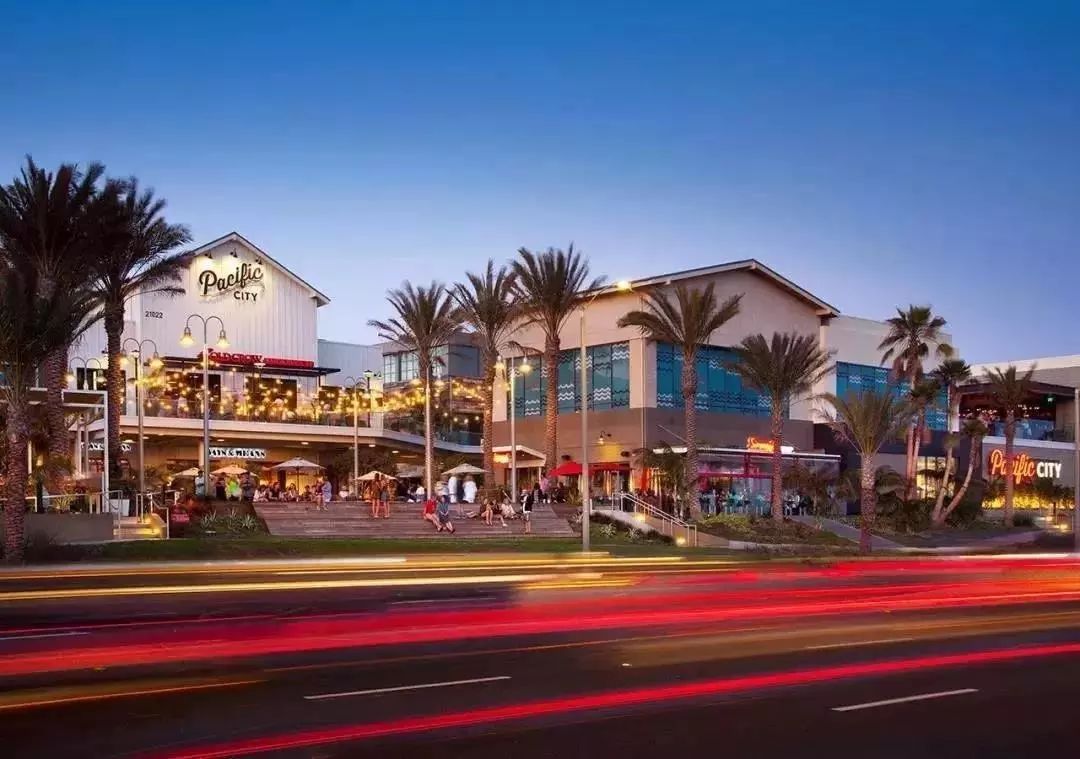
© JERDE
█ 作为JERDE的设计主创,您在大学读书期间,印象最深刻的设计项目是什么?
Which design project impressed you the most when you were at California Polytechnic University?
Jeri:多年前的一个夏季,有这样一个项目,令我至今印象深刻。将它形容为我景观设计之路的“原点”并不为过。这个“原点”为我整个职业生涯奠定了一个思考基础。
我在SWA实习期间,有幸参加了一个为期四周的研修活动。我们坐着大巴在加州各地参观著名建筑项目。其中,艺术家野口勇(Isamu Noguchi)的California Scenario公园让我眼前一亮。该项目受科斯塔梅沙市一个背景强大的家族所托,也是野口勇去世前创作的最后一批项目之一。
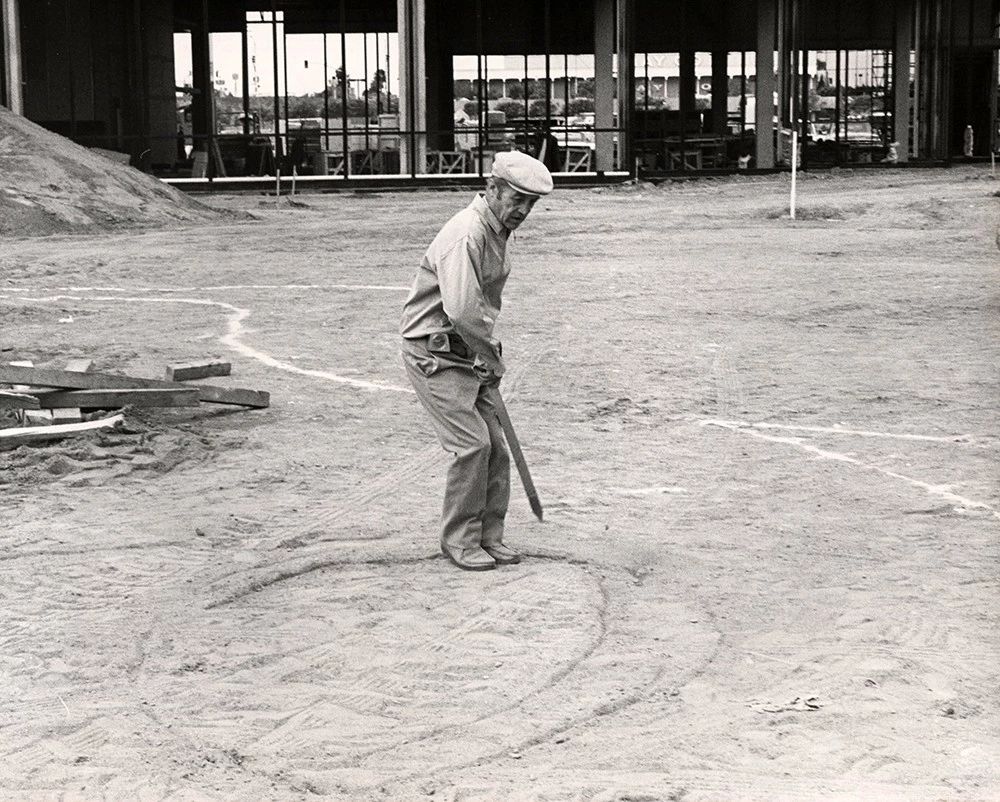
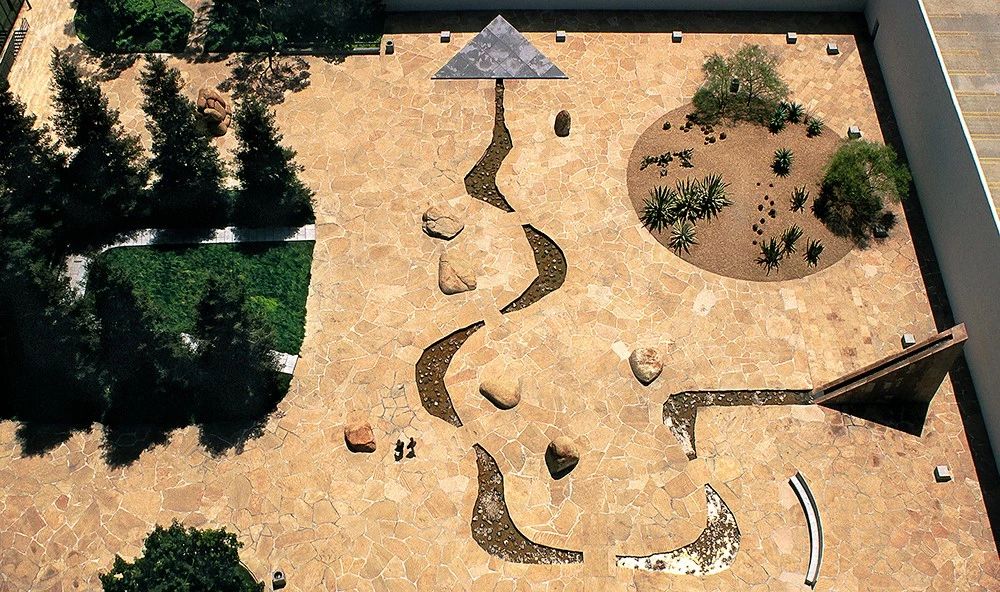
California Scenario公园 © Internet
一片平坦的方形基地,在野口勇手下成为加州记忆衍生出的崭新回游式庭园。该项目被大家称为“加州剧本”,其最大亮点就在于它娓娓讲述出当地的历史文化起源。“利马豆精神”雕塑、“能量喷泉”、“沙漠地”、“森林道”,皆成为探寻当地历史的重要入口及象征。
野口勇了解到当地原来有许多日本农民以种植利马豆为生,他真的就将利马豆当做材料融入雕塑创作中。这个公园里的每一处景致、雕塑,都从其独特角度体现了加州物语。
还有一点很有意思,该项目周围的墙壁被漆成白色。配合日光及灯光的变换,营造出白天与夜晚完全不同的景致,极简的手法却营造出戏剧性的创新体验。
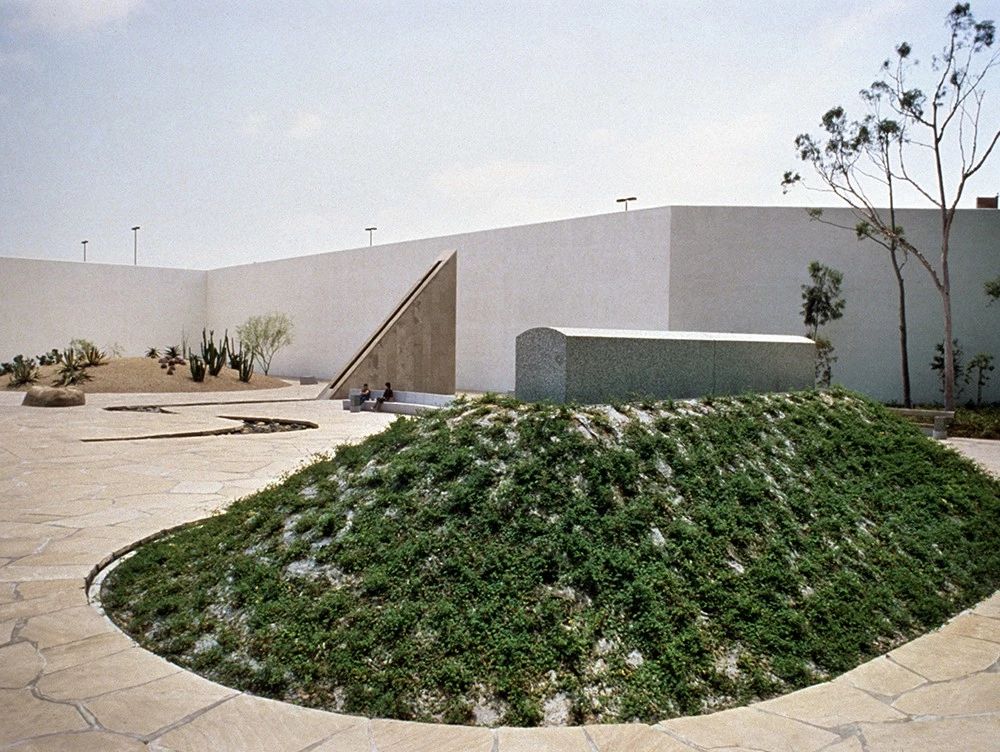
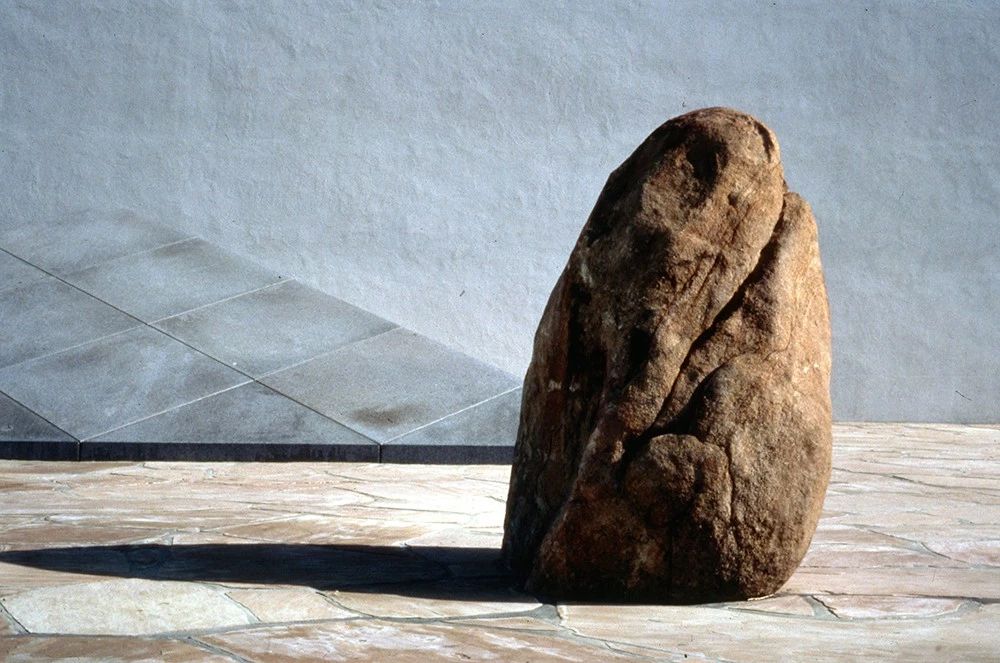
California Scenario公园 © Internet
It was a long time ago, but there are a couple of projects that changed my thinking in design. One of the projects that impacted me the most was that kind of project that shaped my career in landscape architecture. I received an internship at SWA, one of the best firms at that time. It was a four-week summer program in Sausalito. I remembered that we took a bus all over California to see monumental projects as a retreat. What impressed me was the California Scenario, designed by Isamu Noguchi, a significant artist.
The garden was commissioned by the secret family in Costa Mesa and was considered as one of the last projects Isamu did before he passed away. California Scenario was interesting because it talked about a whole narrative regarding California. It focused on these various scenes within this medium-sized courtyard that spoke about the significant areas of California, such as Joshua tree, the aqueduct, or the lima beans where the project was located in. There were a lot of Japanese farmers in that area. They used to grow lima beans. So Isamu literally used lima beans to make a little sculpture, which is quite impressive. The sculpture talked about the ability to look at these various scenarios in speaking about a narrative. It gave you a bigger idea, what the California scenario is. Another fantastic piece was that he painted all the surrounding walls white and used lighting to create a different effect from daytime to nighttime. You can imagine, California scenario is a real experience of a theatrical quality in a sculptural nature but done in a minimalist way. So, I believe that the project is quite significant.
█ 野口勇的这个项目,对您现在的设计实践产生了怎样的影响?
How did Isamu's project impact your current design practice in JERDE?
从那以后,每当我拿到一个新项目,我都学会了将厚重理念、文史起源这些看似宏大的概念,包裹在细节里,并通过一个引人入胜的故事去展现其背后的抽象概念。这是野口勇“加州剧本”给我的最大启发和影响。
野口勇作为一个雕塑家,能够将雕塑与空间相结合,从三维视角去解读空间,这恰是平面设计师不太具备的东西。 而JERDE则有着与野口勇相似的观察空间的角度,我们力图从多重层面、不同角度去看待建筑、景观、空间,不断开拓出创新之作。
Ever since then, when I worked on projects, I would like to speak about the bigger idea by telling a compelling story. As a sculptor, Isamu Noguchi looked at the space in three dimensions, and that's the difference between a flat artist and a sculptor, using the light quality to get around the whole object. This sort of virtue is we talk about JERDE, which has a similar design process.
█ JERDE在城市综合体环境及空间设计方面有丰富创意,设计初期,这些创意来自哪里?
We can see many creative ideas in JERDE’s environment and space design of urban mixed-use development. Where did these ideas come from in the early stage of design?
Jeri:JERDE的创造力来源于方方面面,仿佛一个架构复杂、运作精良的存在。我总是认为,创造力取决于一个人看待问题、理解问题的方式,以及如何跳出常规思维去创新解决问题的能力。
创意的基础是了解事实。我们接手项目,一定会详细调研该项目所处地区的地域特色、历史文貌,这些是我们手里可以依赖的历史依据。我们从这些事实根据出发,细细梳理其关系,再进行排列、整合。
在创造的过程中,我们还必须牢记自己的身份——建筑及景观设计师。因为我们的创造性工作不能异想天开,在尊重场地精神的同时,还得满足客户需求、城市社会发展需求等等。当所有需求和因素在我们手中结合,我们渐渐理出一条清晰的线索,得到一个业态混合的综合体全貌。
所以说,JERDE的创造力以事实为基础,以实践和需求为导向。我们总是做足功课,走访场地、掌握所有相关参数,创造力加上可持续性方向,让我们走得更远,作品更出色。
We don't believe JERDE's design principles just come from one source. The creative processes come up from all kinds of different pieces. It's almost a coalition of a lot of different pieces. The creativity comes from how you put when you understand the definition of the problem and how you solve that problem by using a creative manner.
With that in mind, since we believe in the authenticity of a project, the creative part comes from understanding the origin,which is what and where the project is,what is the history. After we did research, we could figure out how to choreograph and organize these together. Creativity is really important, because sometimes as an artist, you just do what you want. But in architectural practice,creativity is how to take all the different factors involved and understand who you're designing for. You also have to understand the parameters of the site and the needs of the client. When you put all these together, you could easily mix them up with various aspects. That's what we call the idea of mixology. The creativity comes from that.
At JERDE, we know we're making a project, but we don't know what we're really making quite yet until going through investigations and spending time on the site and working with the client. Visiting and understanding all the parameters help to get a real good feel about how we use our creativity in a certain direction and how to make it sustainable. Because you can be creative, and it can be a fun project, but that can't just sustain the whole longevity of a project by just having fun. You need to add a few fun sprinkles to an overall big idea.
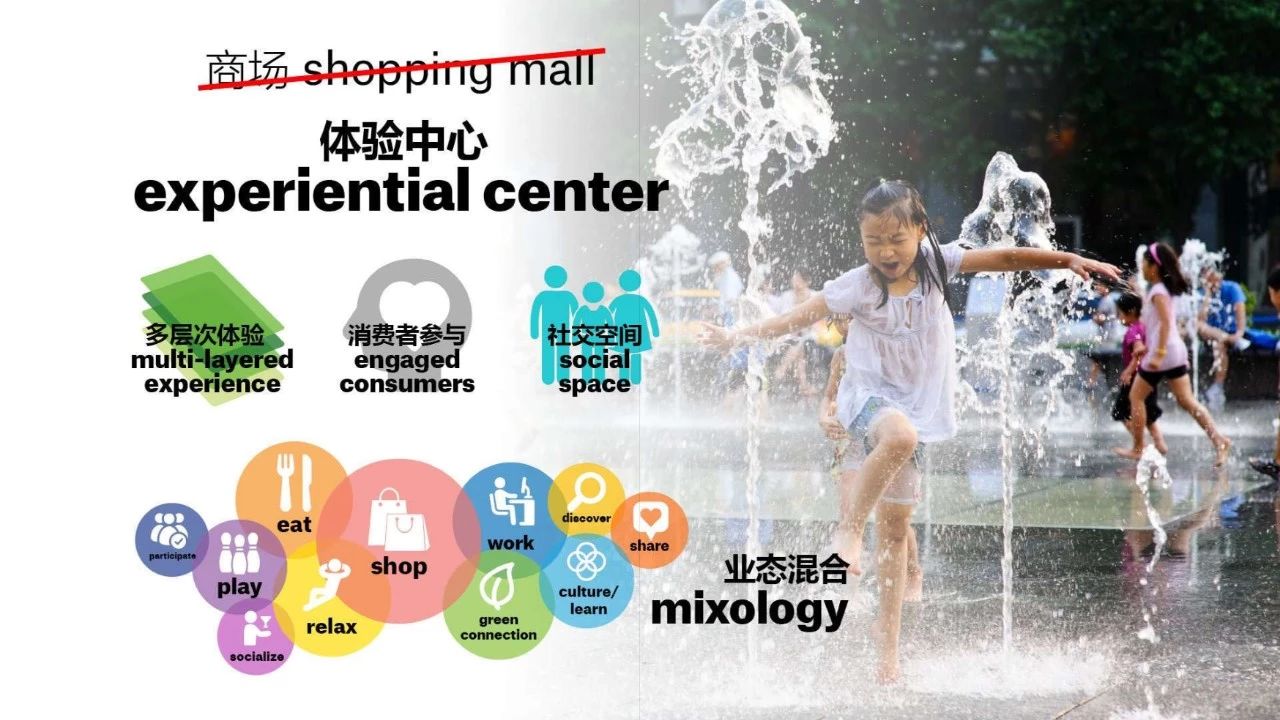
业态混合 © JERDE
█ 在实际项目中,景观设计有时处于建筑设计的附属地位,在JERDE您是如何把景观设计和建筑融为一体的?
In commercial projects, landscape design is often considered to belong to architecture design. So how do you connect architecture and landscape design when overseeing a project?
Jeri:这确实是JERDE有别于其他公司的优势。不少人在看待建筑和景观时,将它们分别对待。其实二者关系密切不可分割。试想,如果一个设计师只专注于建造一栋建筑,却忽视了它与周边空间和环境的互相影响,那这栋建筑会成为孤立的存在。事实上,建筑与景观密不可分,设计师要从多维度进行思考,服务创作。
“连接性”是至关重要之处。我们梳理出项目相关信息,包括周边环境、地域特色与个性,这些信息成为一个个“催化剂”,催化剂聚合在一起,产生火花,点亮整个项目,营造出更佳的体验感,激发出更具创意的发展空间及城市复兴的动力。
我们在调研项目时总是不断突破自我,不断拓宽边界,直至我们获取所有的相关信息才罢休。这也是一个JERDE设计师必须具备的素养和能力。我们向来注重可持续性发展,这一终极目标推动着我们创造“不朽”之作。
我们通过将作品带入实地,汲取当地灵感,营造建筑景观与周边的充分互动,挖掘时间线上的前后联系,不断在时代前进的浪潮中屹立不倒。
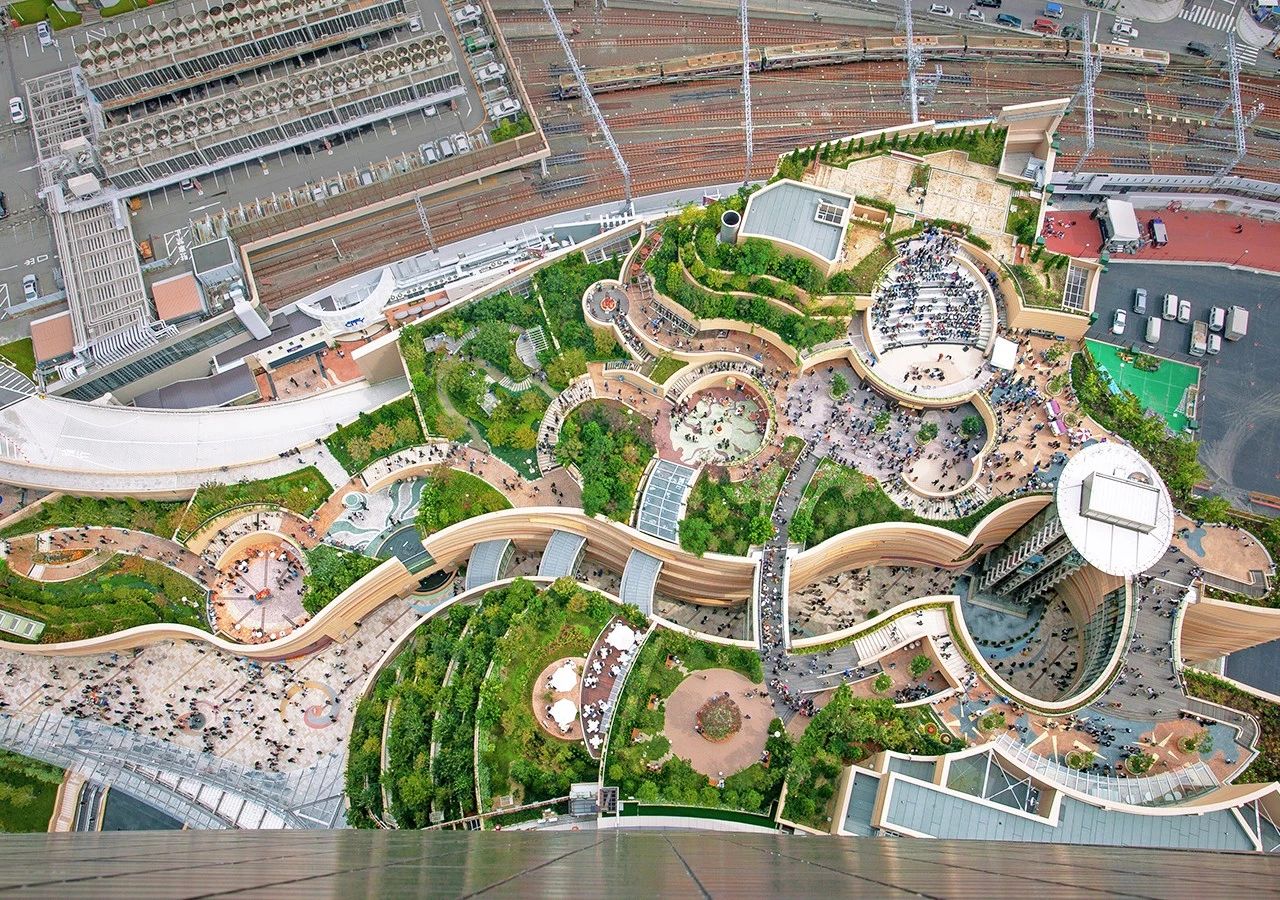
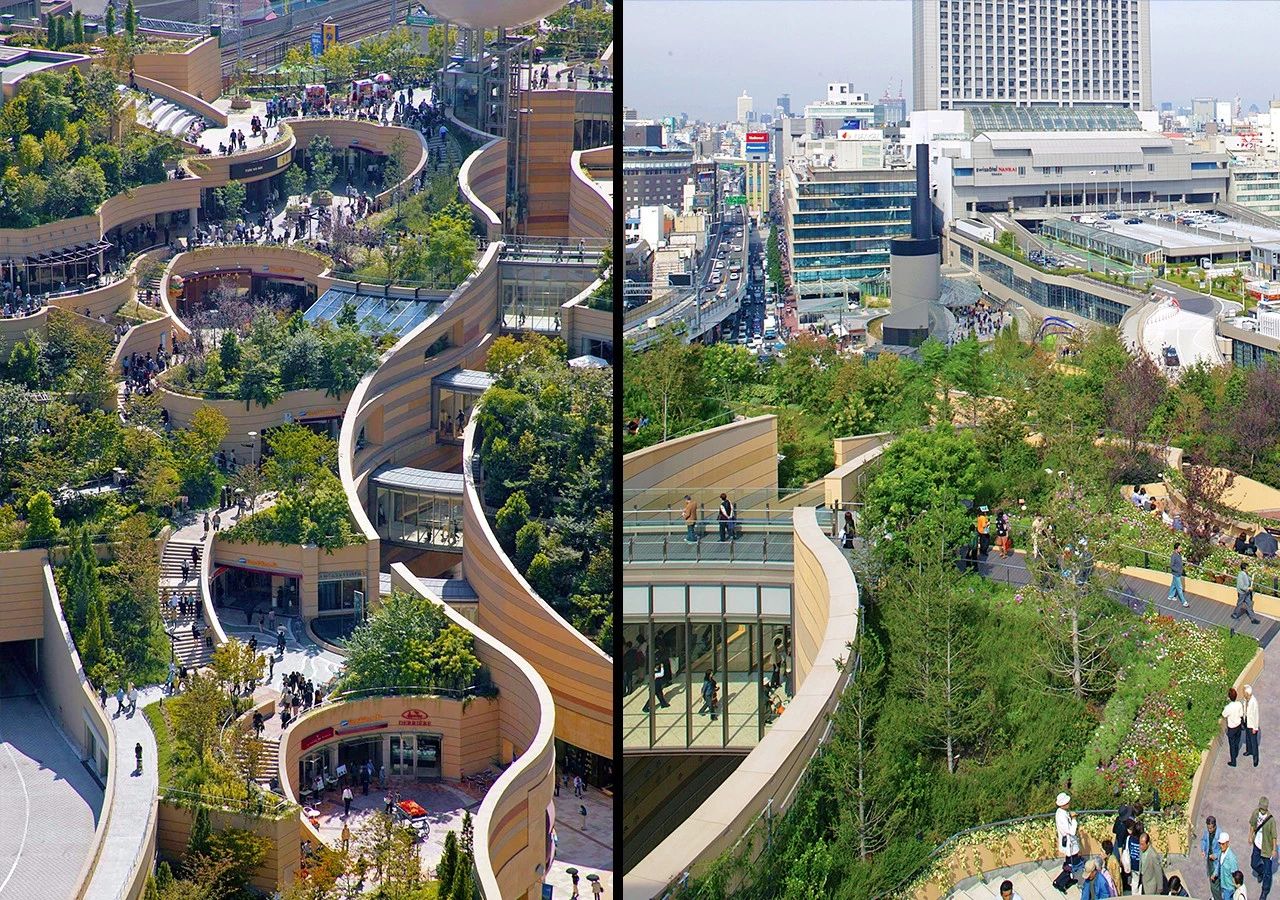
日本难波公园 © JERDE
设计创作中,景观、建筑、体验感,总是通过使用者来进行传递和延续的。因此,关注“使用者”及其体验感,在JERDE亦十分重要。始终从使用者角度出发,令JERDE轻松游走于建筑和景观之间。
现今很多项目都是从景观设计起源而来,如高线公园,它的出现改变了设计行业。将公共空间和很多相关要素相融合,成为了我们常说的“城市舞蹈”。很多想法就源于景观设计的本源训练。
That's the big difference between JERDE and other firms. Sometimes people separated architecture and landscape design, but they are inseparable. Because sometimes designers are so preoccupied with building the object without understanding how it is going to actually affect the surrounding neighborhood, how it's going to set up, and how it's going to interact with context. So, the two have to work closely together. As a designer, you need to run various tasks at the same time.
Most of the time, the idea that we are looking for is connectivity. The project is right there, but the significance of that piece of development is how it affects the surrounding area in every direction. And we call those catalytic projects. Connectivity is to create a catalytic effect and ignite the whole block that brings a bigger development in the overall region.
That is to say:when we look at our project and get to the boundary line, we cannot stop there. We have to look at its whole surroundings in order to come back. With landscape architecture training, that is very essential and basic. At JERDE, a lot of “timeless” comes from the idea of sustainability that we were doing for a long time. Now it has become a keyword. The ability to take its surroundings in a natural context or natural metaphor helps us to create more “timeless” sustainable projects.
Another important thing to us is that landscape architecture and the way we perceive space is through the orientation of the person, the people, and the users. That is a natural way of design in JERDE. So, it is easy to transit between landscape and architecture. Nowadays, most significant projects are being developed from the landscape base, such as the High Line. It revolutionizes the world and the way people work. The idea of integration of the public space is an “urban choreography” Lots of them coming from the training of landscape architects.
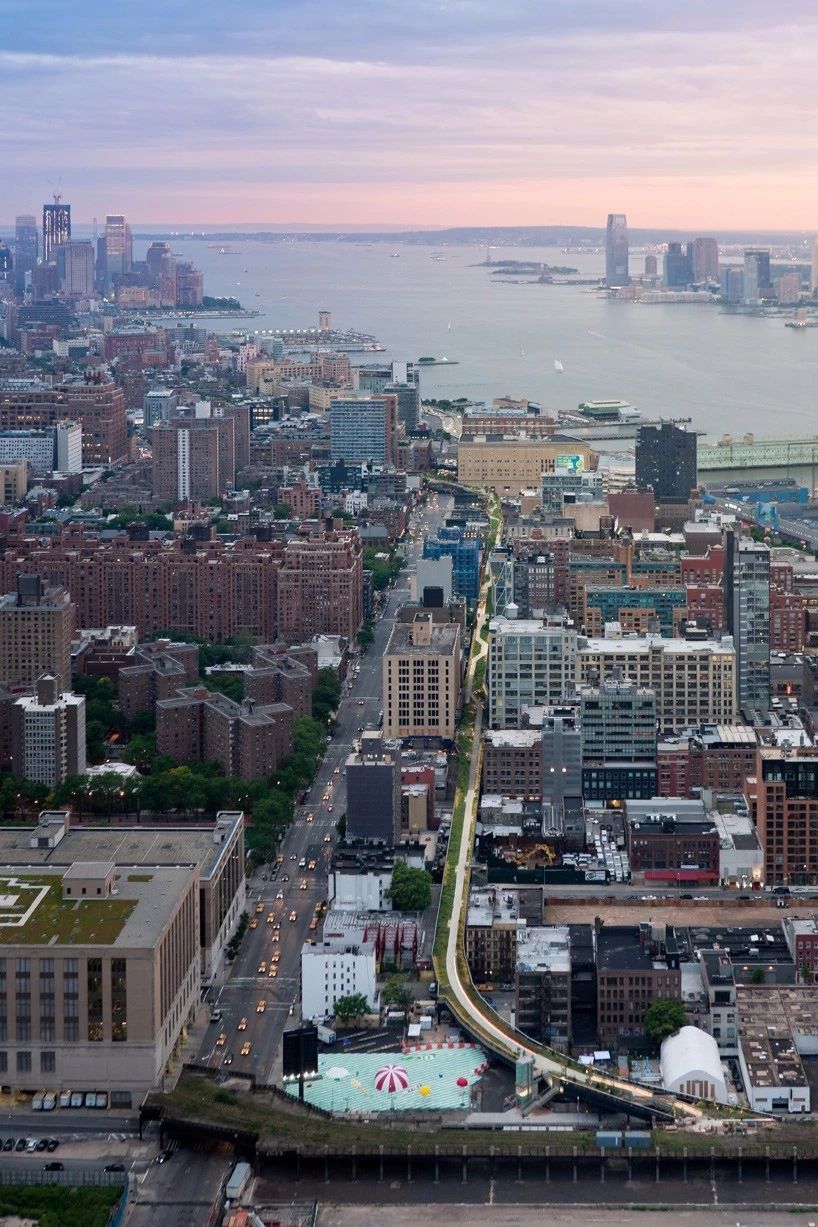
高线公园 © Internet
█ 自然景观与人工景观如何很好的共处?JERDE的三亚海棠湾君悦这类项目,当度假性景观插入到自然景观中,自然景观保护和开发的“度”,该如何掌握?
When developing a resort project in natural environment like Grand Hyatt Sanya Haitang Bay Resort & Spa,how do you master the balance between nature conservation and site development?
Jeri:这总是一个棘手问题。这类项目中,当你把一部分原始“绿色”拿走,替代进一些人为的景观空间,一定要注意“平衡感”的把握。
在JERDE,我们总是将建筑景观与自然结合来看待,力图将其融为一体。而且我们总是尽可能地,保留或利用场所本身已有元素,融入作品,以此来体现地域精神和个性。
我们做的很多项目都是结构化的、多层的,我们创新性的做出了多种多样的“立体层面”。例如,大家走在街道上可以看到的周边绿地,我们希望将其引入垂直层面,在更立体的纵向线上,也创造出密度绿地。这一点也和亚洲地域特色有关,水平面上的发展有时会受到局限,因此我们往竖直方向开拓延伸,打造多样化、不同高度的“水平层面”景观,甚至包括屋顶。
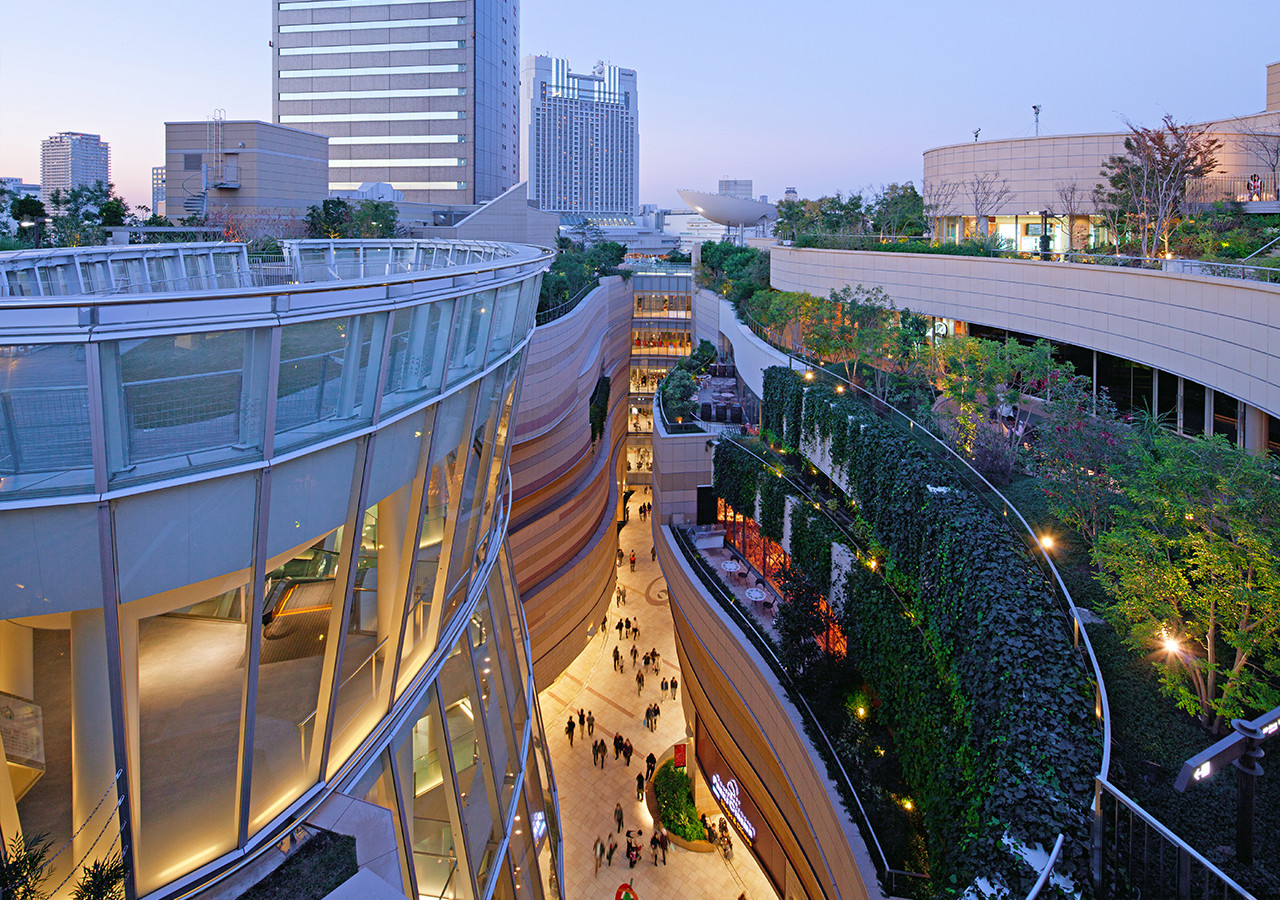
日本难波公园 © JERDE
除此之外,我们还注重自然光的引入与运用。受亚洲气候影响,空调成为项目中的必备品之一。但我们总是开拓性的寻找突破口,将自然风与光,带入立体层面,制造新的惊喜。
也正是藉由自然光与风的引入,我们总是创造全新的绿化呈现方式。立体绿化不能止步于绿墙,在项目开始设计的时候,我们就很自然地加入了垂直层面种植绿树的各类可能性与方法。
结构意识,总是让设计师可以在第一时间,找出引入自然元素的重点区域。越早介入这一思考越好。一旦项目启动,中途想加入垂直绿化,就会出现“牵一发而动全身”的尴尬。当我们意识到设计与自然相连接的重要性,就会及早在结构上做好预处理,以化解日后的困难。
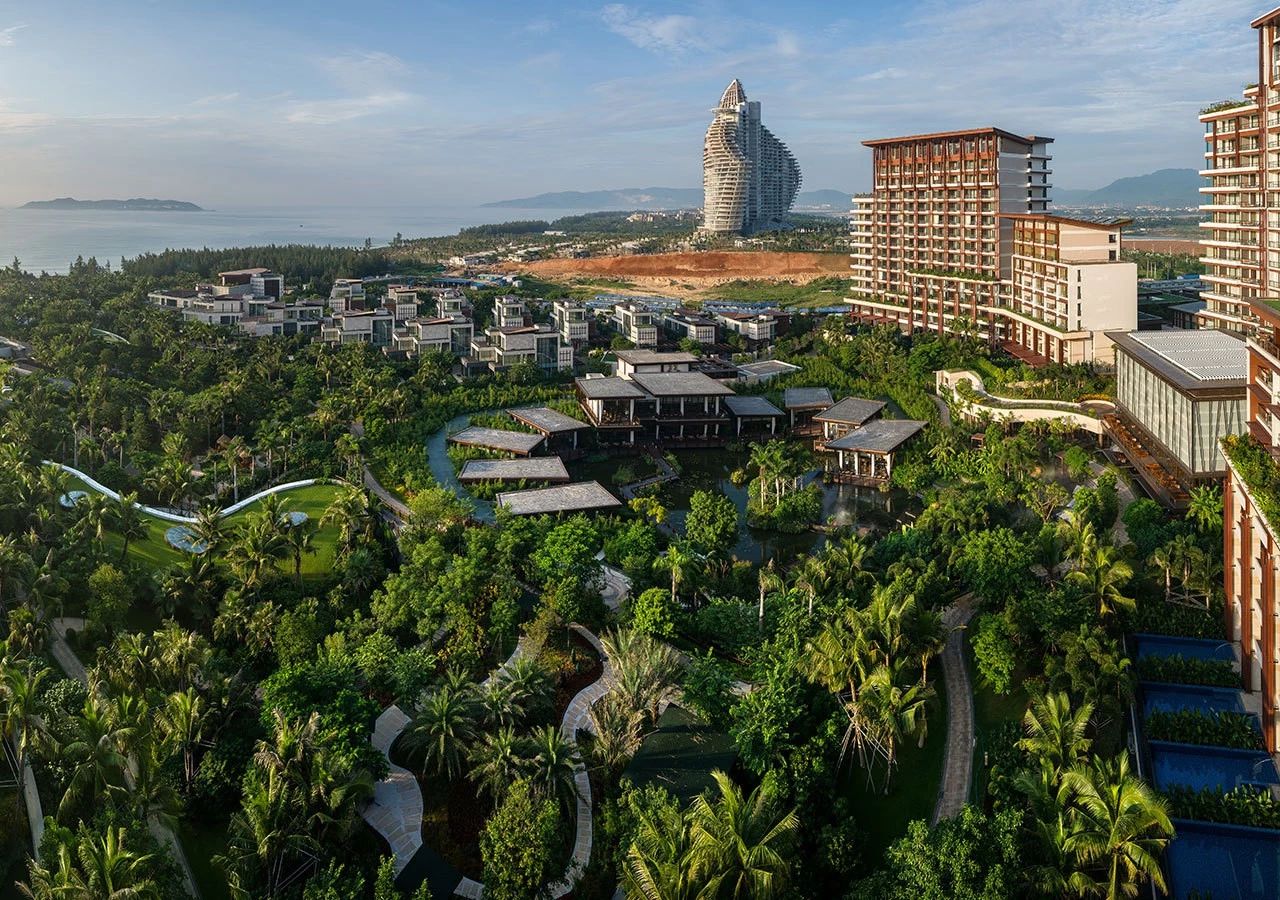
三亚的海棠湾君悦酒店 © JERDE
That is always hard. When working on that kind of project, you have to take pristine green space away and replace it with manmade space. So, you need to balance manmade and nature. A lot of our projects have integration with nature. We look at it in a different way from the landscape perspective, so we try to figure out how to bring back some existing elements on-site, which provide the spiritual qualities. Our most projects are structured,and what we are creating is multiple various grounds. The natural ground that you walk on is considered as existing green. A concept at JERDE is vertical density. It is to create a feeling on the next level up. Because in Asia,you're limited to the horizontal, so you have to grow up to create “another ground” Then the space experience is mixed with the lower ground, the middle ground, the upper ground, or a roof. We also focus on natural light. Of course, in Asia, it's really hot and humid for some months. We have to use the air conditioning. But in other projects, we are able to introduce a breathable environment that allows us to plant on multiple grounds with different ways of greenery. With an open mind about greenery, there are so many new components we can use. It is not limited to vertical green walls. We need to bring a new way of planting at the beginning of a project. What we always do is figure out how we can work with the structure to quickly identify those significant areas that we can bring in nature in. It won't be a problem if you do it early on. When building projects vertically, it is hard to coordinate the structural conditions. At least for our firm, we realized the importance of the natural connection. We tried to work with the structure in that way.
█ 在城市综合体等商业项目中,例如可口可乐园区、难波公园等,当设计师和开发商有不同意见时,要如何展开合作?
Many projects you’ve involved in are commercial projects, such as the Coca-Cola Park and Namba Park, etc. How do you cooperate with the developers when you have different opinions?
Jeri:与客户进行良好沟通,一直都是设计师的挑战之一。我们采取的方式是一起开研讨会,充分沟通彼此用意,每个人都可以发表意见,彼此尊重。整个过程是愉快而活跃的,我们喜欢与客户进行这样的沟通和合作。
我们还会采取一种“团队机制”以帮助沟通。客户欣赏我们某位设计的才华与热情,不代表他们会接受这个设计师的所有设计想法,因此,我们组建了团队,进行集体沟通。集体沟通的好处在于,当一个人的想法不被接受,我们可以有另一位成员,从不同角度与客户沟通,要么说服了客户,要么可以了解到客户不喜欢这个设计的真正原因。
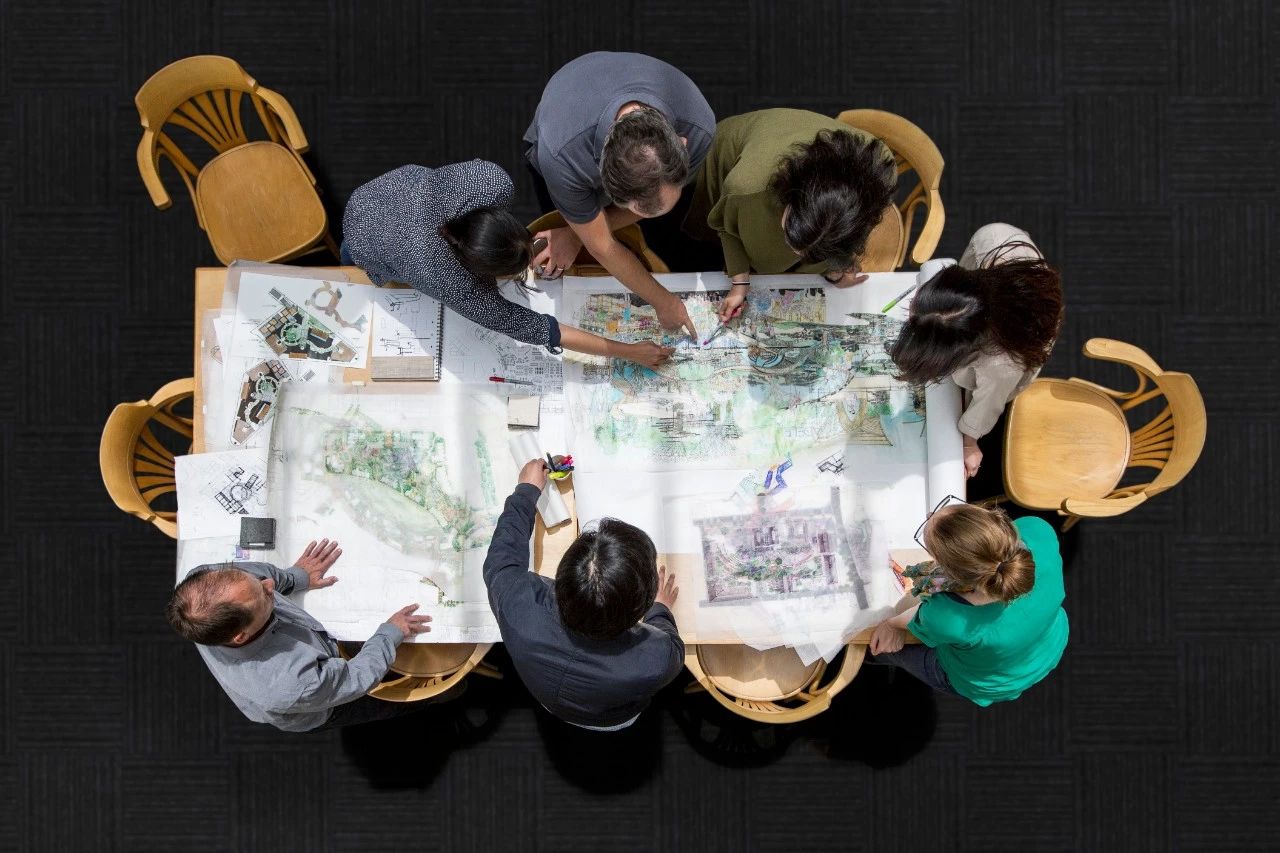
© JERDE
有时候,客户无法开门见山、直截了当地说出创意被否掉的原因。有可能来自于他们的直觉,也可能有其它的他们需要权衡的因素在里面。因此,我们总是积极引导客户说出自己的真正想法。在研讨会上,以充分互动的方式,来探寻背后原因与真相。因此,研讨会对于公司来说是很重要的一个渠道,让大家有机会接触到项目甲方决策者,进行彼此对话和交流。
The challenge of handling the client is a part of our profession. At the beginning of projects, we have workshops with the client. Everybody can take an equal seat on the table during the workshop. It is a very engaging process. We always like the way to work closely with the client. They can compare different ideas. We ask them to invite anybody from their organization, and their opinions will influence the design. We utilize that to have a dialogue with the decision-makers.
Sometimes clients feel uncomfortable, and we have all kinds of people on our team to help communication. That's why we have a team. Sometimes clients really appreciate our enthusiasm, but they may not like your idea. You need to have someone in the team to convince them and have the client explain why they don't like it. So, the first thing is to understand why. We don't want to be defensive, but we want to truly understand the reason.
Sometimes clients cannot honestly tell you they don't like it because they think it will hurt your feelings. Or they're dealing with other parameters, or they have other ideas, but they never discussed it. We were so enthusiastic about this idea that they can explain it. A lot of that is true, then questioning them why they can interact and have a design relationship. So, the workshop makes us have to build a dialogue with the decision-makers.
█ 您从事了近30年的景观设计,做了很多国际项目,您认为中国目前的景观发展处于什么阶段?
You have been engaged in landscape design for more than 30 years and have done many international projects. How do you think about China's current landscape development?
Jeri:我们参与中国项目已有很长时间了。我记得第一来北京做项目,是1996年之前了。对于我们跨入这一市场的早期项目,当时合作的顾问,其观念还没有与世界行业发展完全对接。但这些年的情况完全不同了,行业发展与国际接轨,许多国外的优秀从业者亦选择回国参与建设。加上互联网的帮助,中国当前景观水平及认知与国际差距并不大。
在中国,尤其是在北京,人们对环境的注重,对室内室外概念的认知在日益加强。北京四季变换,特色鲜明,这是一座可持续性发展的城市,有污染,美国也有。城市化的进程中,污染是其附属品,所有建筑的建造过程也会带来一定程度的污染,但这不意味着我们束手无策,我们应该积极地通过各种方法去缓解这一局面。我很欣喜地看到中国的很多项目,都更多地在将自然与建筑景观相融合。
“城市化”并不意味着世界需要令人称奇的各类出挑建筑,它更多的是需要大家意识到建筑与自然结合而产生的可持续的重要性。我相信亚洲所有国家,也包括中国在内,越来越理解TOD(以公共交通为导向的开发)的重要。
TOD不是简单地让我们从一处移动去另一处的效率提高,真正精髓在于其本身可以成为城市公共客厅,起到集枢纽、社交、互动于一体的综合存在。我希望各地包括美国也能持续推动此方面,不断革新。中国当前已经开始因地制宜,不断结合实际情况制定发展方案,这是非常好的现象。

城市环境 © Internet
Our involvement with China has been a long time. We first worked in Beijing before 1996. We remembered that interviewing consultants was kind of behind the times, but now it is different, it seems Chinese education has improved. A lot of people who have been abroad had come back to China. And because Internet technology is accessible, there is not much gap between China and the current international landscape level. No matter which country you are in, people can keep pace with times and learn more information online.
To my understanding, the people in Beijing have continuously emphasized the design of both indoor and outdoor spaces. Beijing has distinct seasonal changes and the ability to integrate various factors, which makes people feel that it is a sustainable city. I understand that there is pollution, but that the pollution aspect must be no different than the US. Urbanization did result in pollution. That's what people face. Buildings that occupy an essential place in the world also produce pollution during the construction process. However, some measures can be taken to alleviate this situation. I appreciate that there are a lot of Chinese periodicals that produce the ability to integrate more of nature's role with the built environment.
Urbanization doesn't necessarily mean that you make all these amazing looking objects as an architect. It means the integration of the sustainable nature of that. I do think that Asian cities really understand the significance of TOD (a transit-oriented design project). TOD means people will have multiple benefits, rather than get from one place to another. It can also become a real hub or a living room for a city. I think that's an excellent thing here in China and wish that even the United States should look at that more. It is a good phenomenon that China can make development plans according to the problems it faces.
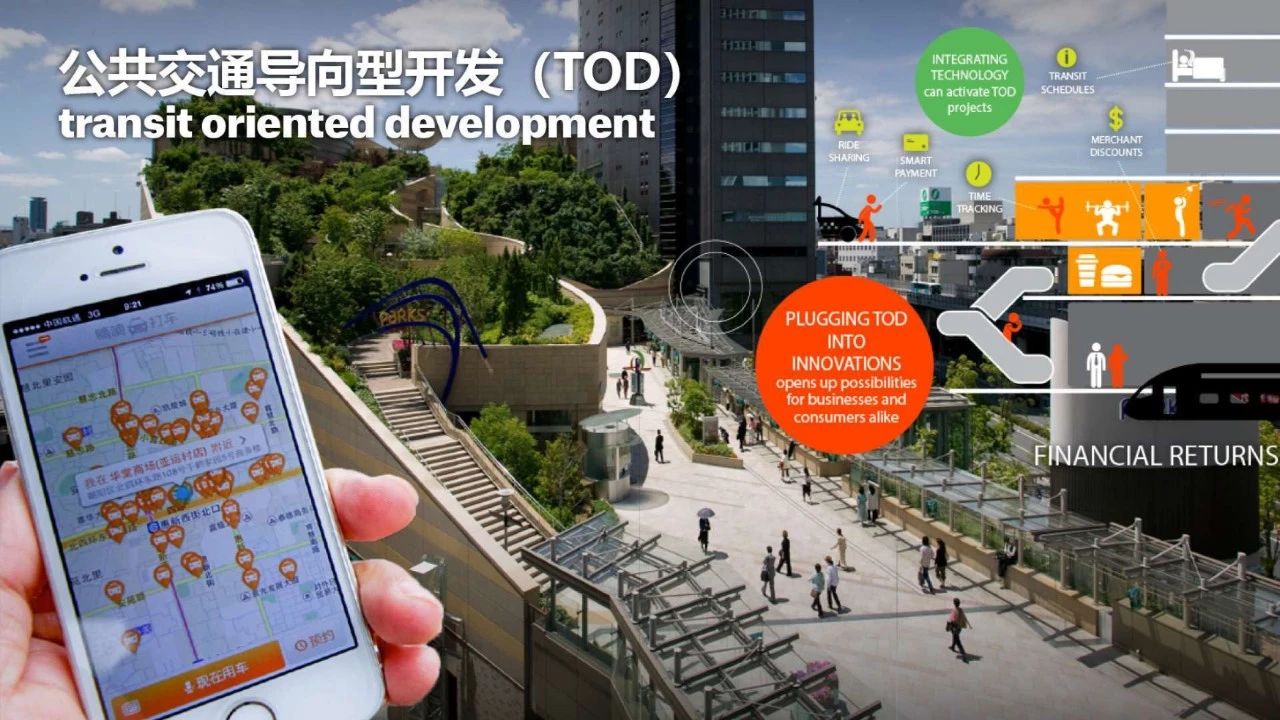
TOD © JERDE
█ 可否给景观和设计专业学生及青年设计师一些建议?Can you offer some advice for landscape architecture students and young designers?
Mark:我的小学和中学是在香港的英制学校完成,之后去美国伊利诺伊州理工大学读建筑。纵观我的受教育历程,我发觉亚洲、欧洲、美国的教育方法不尽相同。亚洲的教育方式以功课、背书为主,对于自由提问不够注重。英式教育以严格著称,开放度还是不及美国。到了美国的大学,我深切体会到美国教育方法是在刺激人的想象力,试图让每个人回到童年时对事事都问个为什么的状态。
From primary school to high school, I studied in a British school in Hong Kong. After that, I went to the Illinois Institute of Technology to study architecture. After I went there, I felt that education methods in Asia, Europe, and the United States are different. The basic education method in Asia is to do homework and endorsement. In short, don't ask, just do it. The British education I received in middle school was not as open as the United States, and it was still a bit strict. At the university, I discovered that the American education method is to stimulate your imagination and bring you back to the age when you often asked why.
Jeri:是的,对于亚洲学生来说,我特别希望大家能勇于表达自己的意见并善于提出质疑。可能目前受教育传统影响,对学生教育的开发程度不够,但要努力摆脱刻板学习方式,激发自身创造力。
你不是复制粘贴的机器,要有一双善于发现新鲜事物的眼睛,让兴趣点激发自己无穷的创造能力。我相信质疑本身,就是为了探究真相,提出疑问的同时,就是在开发和利用自己的思考能力,要不断去强化这一方面。
与此同时,要相信自己有能力不断挑战自我,人的潜力是无穷的,不要止步于现状,要去开拓,去创造。因此,不妨从自由表达自己的意见和想法开始。
For the students in Asia, they should be able to express themselves and come up with questions. Although education for students sometimes is not open enough due to the system, I still hope that everyone can be creative, instead of just cramming. You are not a copying machine, you can see many new things, or you will be interested in something, so you can be creative. I believe that questioning is about finding facts. If you question what you're doing, and you know you're using your mind to think. You should reinforce this kind of free-thinking.
You have to believe your ability to challenge yourself, that what you do may not be enough. Each of us has incredible power. So you have to be free to express your ideas.
Mark:我想,中国学生出国留学,应该注重吸收当地文化,把英文学好,尽可能多地与当地人交流。文凭只是一个方面,深入了解所在国家的深厚历史文化也很重要。我们从事建筑行业,艺术、文化、哲学、历史,都是我们需要了解的方面。
因为我们的职业,不是一纸设计的平面存在,这背后蕴含的功底与积淀,需要用时间、知识、经验、阅历去造就。也许不少伟大的建筑师在人生的50岁阶段才迎来成就,就是因为他们把前面的时间都用来做铺垫了。所以在学校打好扎实基础的同时,也要意识到,后面的路,还很长,不断学习创新是关键。
Chinese students studying abroad should absorb local culture, learn English as well, and communicate with local students as much as possible. Don't just get a diploma without understanding the culture. Because as architects, we must not only understand science, but also art, culture, philosophy, history, and so on. This profession is too complicated. It is not an endorsement but an accumulation of personal experience, experience ,and knowledge. So many great architects did not start to achieve until the age of 50, because they had been laying the groundwork for the first 30 years. When you study in school, it is just basic skills, and there is still a long way to learn.
访谈 / 文案|Sara Li, Spring Sui
翻译|Lynn You
校对|Yiwei Huang,Sherry Li
编辑|Winnie
审核编辑|Yibo
版权©建道筑格ArchiDogs,转载请联系media@archidogs.com
若有涉及任何版权问题,请联系media@archidogs.com,我们将尽快妥善处理。

